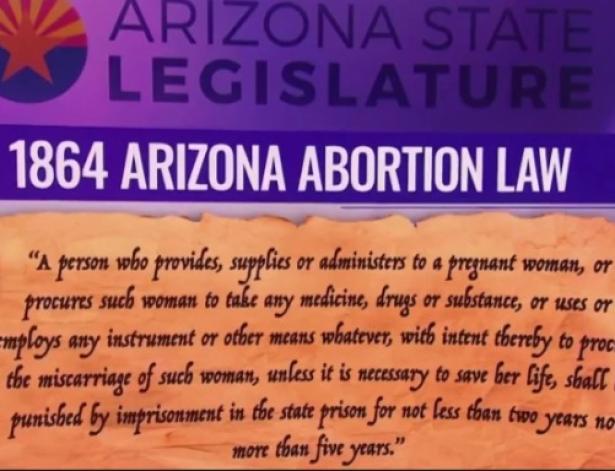Now that the Arizona Supreme Court has subjected those unfortunate Americans under its jurisdiction to the abortion prohibition enacted during the inaugural session of the territorial legislature in 1864, a brief look at 1864 Arizona, and that legislature, is surely in order.
A number of my fellow journalists have begun to plumb the territory and its lawmakers who have been so abruptly brought back from the dead. From The Washington Post, we’ve learned that William Claude Jones, the Speaker of the House during its first-ever session, was married four or five times and that none of his brides was older than 15. A deeper dive into his other preferences reveals that he’d responded to the secession of Southern states by trying to become a delegate to the Confederate Congress. After pro-Confederate forces were driven from most of the Southwest, Jones took refuge in Mexico, and his efforts to return to the United States were blocked by the Union Army, which viewed him as a traitor. He was finally permitted to return in early 1864, when he took an oath to support the United States—just seven months before the territorial legislature was first established and he was elected Speaker of its 18-member lower house. He left Arizona for good in early 1865, deserting the 15-year-old to whom he’d been married for five months, and next popped up in Hawaii, where he took yet another 15-year-old bride.
Then there’s the far more reputable William Howell, a prominent Michigan attorney whom President Lincoln appointed to Arizona’s first territorial judgeship and who put together the 400-page legal code that that first legislature adopted as the law of the land. Howell’s actual time spent in Arizona appears to have run from 1864 to 1865.
More importantly for our purposes, Howell’s 400-page document apparently drew on or directly copied the legal codes of other states, particularly New York’s and California’s, whose ban on abortion Howell faithfully reproduced. Such bans had become more prevalent by the mid-19th century; before then, for you original intent enthusiasts of our Founders, such bans were very few.
But what about the legislature itself, and the electorate that created it? It wasn’t a very big legislature, with nine members of its upper house complementing the 18 in the lower. But then, it wasn’t a very big electorate, either. The first census of the Arizona Territory wasn’t taken until 1870, six years after its government was established. It reported that Arizona then had 9,658 residents (not counting the noncitizen Native Americans). But in 1864—five years before there was a transcontinental railroad, and one year before the end of the Civil War was followed by increased westward migration—the population was surely smaller. Moreover, inasmuch as the territory still had a nontrivial share of Confederate sympathizers unlikely to vote in a U.S. election, inasmuch as women didn’t yet have the vote, and inasmuch as political party organizations hadn’t had time to take root there, I’d be surprised if the actual number of voters was much in excess of 1,000.
So that’s who elected the legislators who codified Arizona’s abruptly resurrected abortion ban.
But did those public servants (all white males) actually pause to consider that particular part of Howell’s 400 pages of proposed laws during their 43 days in session? Did they vote on it separately, or was it approved in a vote on a subset of multiple provisions or on the entire package? What little I’ve been able to glean about the particulars of that inaugural session is that it chiefly concerned itself with designating a state capital, funding contractors to build six roads, and getting federal funds so they could better deal with the Navaho and other tribes. It also granted two divorces, I presume in advance of establishing courts that could hear divorce proceedings. One was to the post surgeon at one of Arizona’s military forts, the other to one of their own legislative colleagues, who claimed he’d been lured into marriage “by fraudulent concealment of criminal facts.”
Just in case you were wondering whence Arizona’s new abortion ban came.
Harold Meyerson is editor at large of The American Prospect.
Used with the permission. © The American Prospect, Prospect.org, 2024. All rights reserved. Click here to support the Prospect's brand of independent impact journalism. Read the original article at Prospect.org.


Spread the word